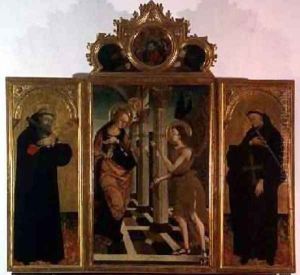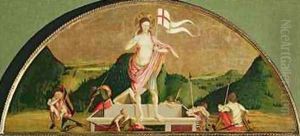Nicola de Maestro Antonio Paintings
Nicola de Maestro Antonio, also known as Nicola Filotesio, was an Italian Renaissance artist born in 1460 in the town of Amatrice, located in the central part of Italy. His birth name reflects his father's profession and status; 'Maestro Antonio' indicates his father, Antonio, was a master in his field, which was a common way to recognize the lineage and skill in artisan families. Nicola's early life is not extensively documented, but it is known that he was active during a period rich with artistic innovation and was part of the vibrant cultural transformations of the Renaissance.
Nicola de Maestro Antonio's contributions to art are primarily in the realm of painting and architecture. He was deeply influenced by the works of the early Renaissance masters, which is evident in his use of perspective, a technique that was being refined during his lifetime. His works often depicted religious themes, a common subject in the period, which were imbued with emotional depth and a keen attention to human detail. Nicola's style bridges the transition from the late Gothic to the early Renaissance, showcasing his ability to adapt and evolve with the changing artistic landscape.
Throughout his career, Nicola worked on several significant projects, including contributions to churches and public buildings, demonstrating not only his skill as a painter but also his capabilities as an architect. His works are noted for their attention to detail, vibrant colors, and the dynamic compositions that engage viewers. Unfortunately, much of Nicola de Maestro Antonio's work has not survived or has been attributed to other artists of the time, a common issue for many Renaissance artists whose records were not meticulously kept.
Nicola de Maestro Antonio's death in 1510 marked the end of a career that had spanned five decades, a period during which he witnessed and contributed to the profound artistic and cultural shifts of the Renaissance. Although not as widely recognized as contemporaries like Leonardo da Vinci or Michelangelo, Nicola's work remains an important part of the tapestry of Renaissance art, reflecting the nuanced changes in style, technique, and thematic exploration of his time. His legacy, while subtle, is embedded in the broader narrative of Renaissance art history, offering insights into the evolution of artistic expression during one of the most flourishing periods of human creativity.

